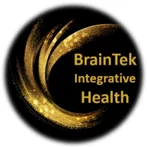
BTH technique is a multifaceted protocol that has been designed and calibrated to relax the cranial nerves.
Please read the Changed Lives section and the OSU study on our website, which shows videos of patients and clients describing their recoveries.
The BTH Protocols affect a comprehensive understanding of human anatomy, physiology, and psychology.
Among the many anatomical structures that dentists must be familiar with, cranial nerves play a pivotal role in oral health and patient management. This article aims to illuminate the importance of understanding cranial nerves for dentists and how this knowledge can enhance patient care and outcomes.
The Role of Cranial Nerves in Dentistry
Cranial nerves are twelve pairs that emerge directly from the brain and brainstem, primarily responsible for sensory and motor functions in the head and neck. For dentists, the most pertinent cranial nerves include:
- Trigeminal Nerve (CN V):
This is the largest cranial nerve responsible for facial sensation and motor functions such as biting and chewing. It has three branches (ophthalmic, maxillary, and mandibular) that innervate various regions of the oral cavity. Understanding the trigeminal nerve’s anatomy helps dentists diagnose and treat conditions like trigeminal neuralgia and manage pain during dental procedures.
- Facial Nerve (CN VII):
This nerve controls the muscles of facial expression and conveys taste sensations from the anterior two-thirds of the tongue. Knowledge of the facial nerve’s pathway is crucial when performing procedures that may risk nerve damage, such as wisdom tooth extractions or reconstructive surgeries.
- Glossopharyngeal Nerve (CN IX):
This nerve is involved in taste and swallowing, as well as the gag reflex. Dentists must understand their role in managing patients with swallowing difficulties or those who experience gagging during dental procedures.
- Vagas Nerve (CN X):
While not directly involved in dental procedures, the vagus nerve affects heart rate and gastrointestinal functions. Its role in the autonomic nervous system can be significant in managing patient anxiety and stress during dental visits.
